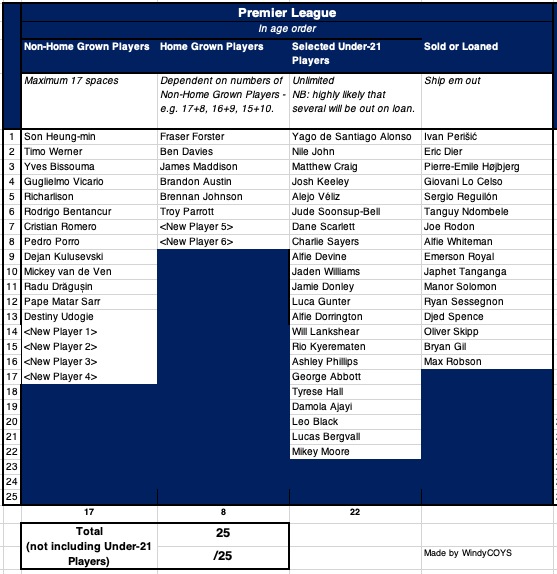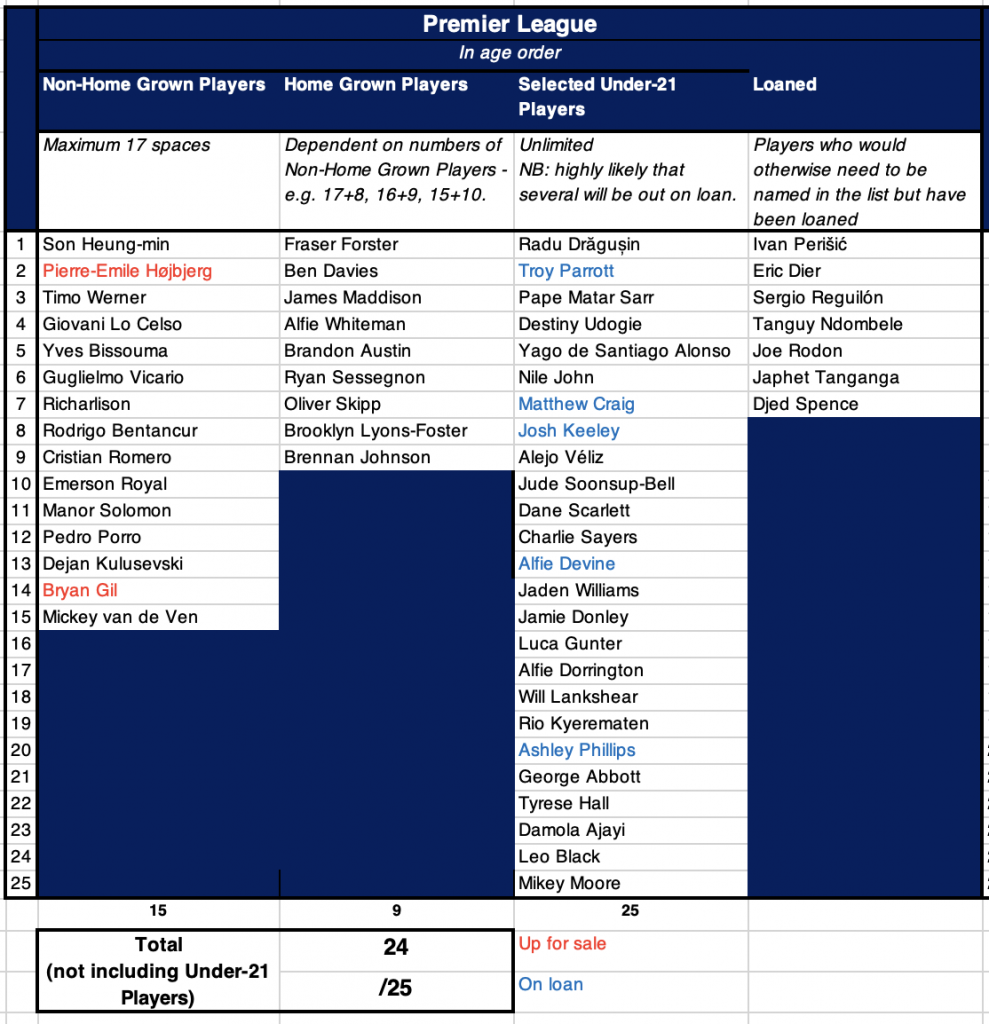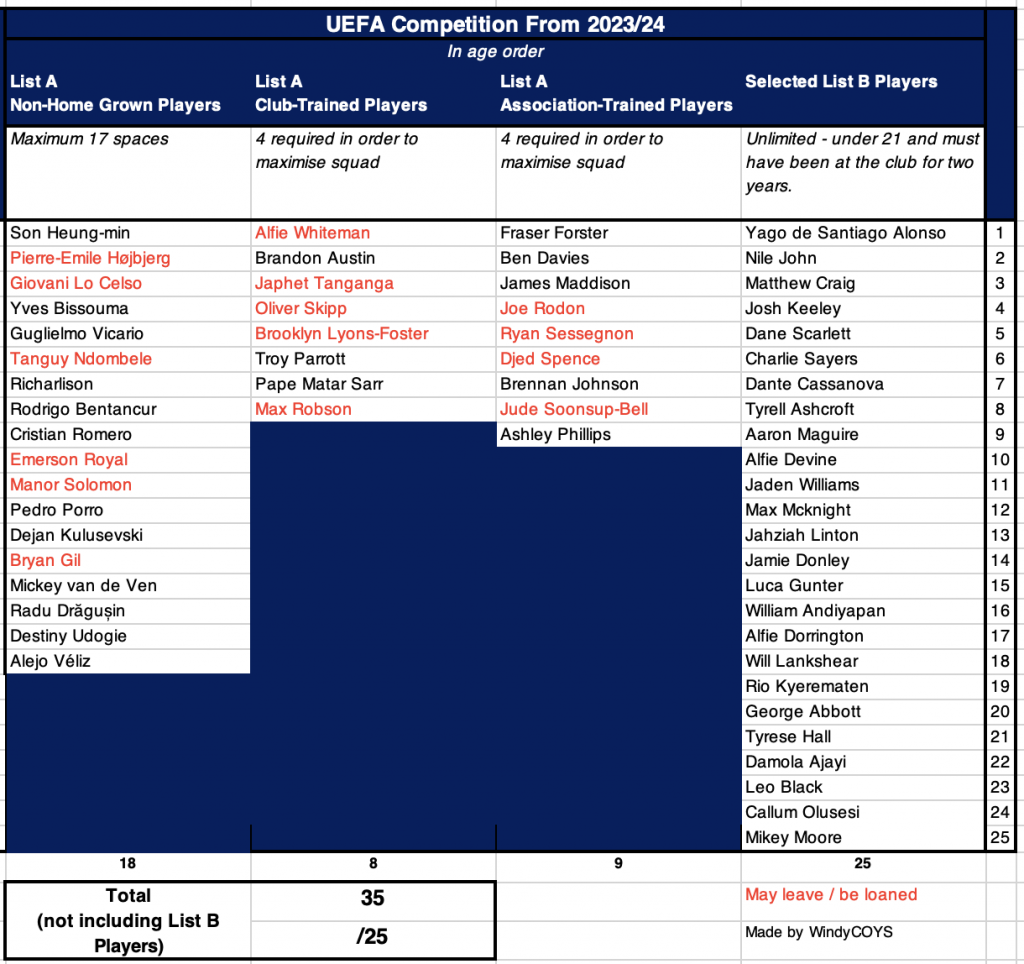Summer 2024 Squad Planning
Back in November, I tweeted that we were 8-9 depth players away from being able to compete in the Premier League and in Europe.
Since then we’ve ticked off the right centre-back (Radu Drăgușin). I think you could argue that with Son Heung-min/Richarlison/Alejo Véliz (and Troy Parrott/Dane Scarlett/Will Lankshear) we have enough quality and depth amongst our out-and-out strikers. But I think the other roles remain requirements to compete on two fronts. Here’s where I am on those.
Goalkeeper
I like Fraser Forster a lot as a person and I only hear good things about his influence on the squad, but I would be terrified if Guglielmo Vicario were to get injured. It’s essential that our back-up is more similar to Vicario in profile: confident with the ball at his feet, with the ability to take the ball under pressure and make precise, risky passes look easy. As well as being pro-active with sweeping and a good shot stopper.
Surely this will be the summer in which either Alfie Whiteman and/or Brandon Austin (now both 25) will leave in search of some actual football. I’ve found their decision to knock about for so long quite surprising. Meanwhile, Josh Keeley develops nicely at Barnet, and should get another loan next season.
Right back
Emerson Royal is a perfectly competent ‘traditional’ full-back, who I think would look pretty good in a team that plays an aggressive mid-block. He’d be a fantastic signing for Everton, for example. However, inverted full-back he is not. He lacks the on-ball subtlety and creative passing to come anywhere close to mirroring Pedro Porro, and doesn’t have the carrying or thrust of Destiny Udogie. Lovely guy, bad fit — but the good news is that we should get a decent fee for him and there are several good options on the market. If we’re looking for homegrown players, then either Kyle Walker-Peters (also qualifies as club-trained in UEFA competitions) or Alfie Doughty are good technical options who can play both sides.
Left back
We’ve not even seen whether Ryan Sessegnon looks at home as an inverted left-back, and that’s exactly the problem. As much as I’ve rooted for Sessegnon to make it at Spurs, having looked so good for Fulham, and the various England youth age groups, his unavailability has essentially hampered his entire career and sadly I think leaves us with no option but to move on from him.
Ben Davies is not an ideal fit for the inverted full-back role and, in my view, should only be considered for the left centre-back role going into next season. However, given that Drăgușin has played in that role with Micky van de Ven out injured, it implies to me that Davies is now down the pecking order. He has just gained coaching qualifications, and I’m sure Spurs would welcome him as a coach with open arms. However, he still has plenty of football left in him at a decent level, so he has a decision to make. Assuming Swansea City stay up, perhaps he does a couple of years there before coming back to us in a coaching capacity.
Left centre-back
And given that Davies has not had the nod, I think it’s fair to say we will be signing a left-sided player. I also think the signing of Drăgușin has made signing an exceptional ball-player for the left even more important. In Cristian Romero we have one of the best ball-playing centre-backs around, in terms of his composure in possession, his carrying, and his ambitious, creative passing. He is a special, special player. Whilst Van de Ven cannot match him for creativity, he has a ‘secureness’ in possession and ability to carry which make him a dream fit for Angeball when combined with his freakish recovery pace. Drăgușin on the other hand seems to have the carrying ability, as he show-cased nicely against Luton Town, but doesn’t (yet) have the same level of composure or passing. For more on this, I’d recommend checking out Nathan’s video, which is Worth The Entry Fee Alone. To quote Nathan in the video, ‘he plays the passive role in an aesthetically aggressive way’ — he is somewhat between Romero and Van de Ven in defensive style. But in his on-ball ability, he’s more Van de Ven. What this means, I think, is that we need to prioritise a left-sided centre-back who is more Romero. Who has the calm, composed style but also has the creative passing. And I’m surprised that we’ve backed ourselves into that particular corner because that’s potentially going to be a tricky player to identify and sign.
Defensive midfielder
We’ve heard a lot from Pierre-Emile Højbjerg over the international break and, although he has been incredibly respectful, it’s clear that he’s not thrilled about his game time. Whilst he has been a really valuable asset coming off the bench and helping to lock things down, he is a player that should really go and be a starter elsewhere (again, there’s a good fee to be had). Even with the additional games that being in Europe will bring, it’s quite difficult to see Ange trusting him in the same way he trusts Yves Bissouma. And so I do think he will leave, and I think he will need replacing. Some fans seem convinced that Rodrigo Bentancur can now be considered as cover for both the 6 and 8 (sorry Ange) but, for me, he is not press resistant enough or defensively aware enough to start at 6 — though I do think it’s a role he can come on and play in matches where we’re searching for a breakthrough against a set defence, or in games against significantly inferior opposition. I much prefer him in the 8 role — pre-injury I’d have argued that he was the best presser in the squad, and last season he showed a tendency to arrive in the box. I hope he gets back to those levels.
Attacking midfielder
As the season has progressed and Dejan Kulusevski has played more as a central player, I think we’ve created a genuine option for ourselves. Between James Maddison, Kulusevski, Lucas Bergvall, and whichever of Alfie Devine and Jamie Donley stays at the club next season, we might just have enough attacking midfield coverage for two competitions. However, I would be in favour of signing a dribbly winger who can also play centrally…
Left winger
Which takes us to left winger. And I’m starting to feel less certain that it should be a ‘left’ winger, having been adamant at the start of the season.
Firstly, I am absolutely certain that we should take up the option to sign Timo Werner for around £15m, a ludicrously good price for a player who brings a wealth of experience and is producing good numbers and carrying a real threat. But that would mean that we have Werner, Johnson, Son and Richarlison who can all play from the left, but only really Kulusevski and Johnson who can play from the right. I should add that I am assuming that both Bryan Gil and Manor Solomon will leave in the summer, either permanently or on loan.
Realistically I foresee Johnson playing more right-side minutes and Kulusevski sharing his minutes between the right and the middle, so I am still leaning towards a left-sided player, just. But if we could sign a player who, like Kulusevski, can share some of those minutes with a more central role, it would give us better flexibility. Eberechi Eze is a really obvious candidate.
If we’re looking at dribbly players for the right, we might want to bear in mind just how beneficial for UEFA competitions having a club-trained player would be…
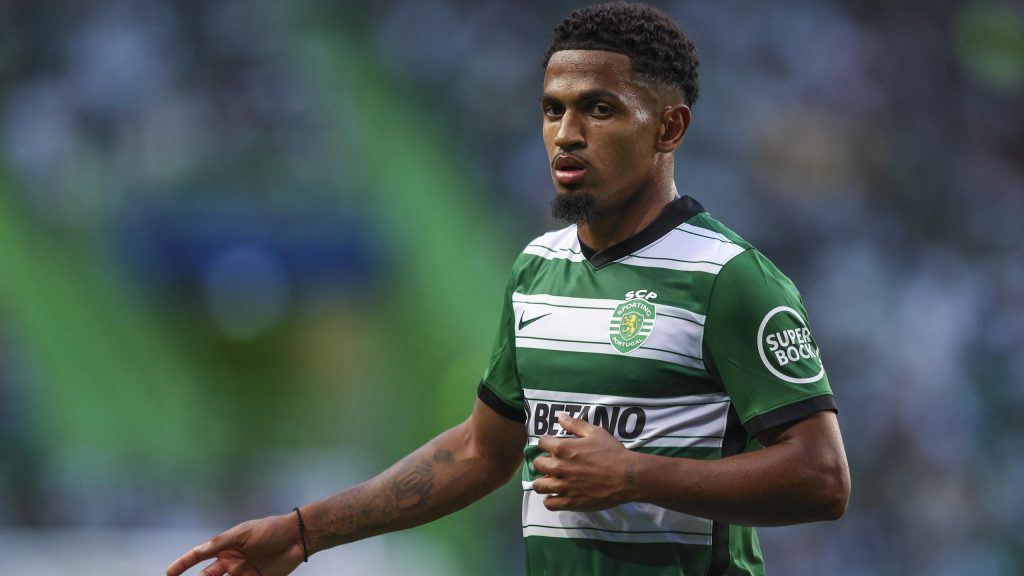
Another way to visualise how beneficial it would be to sign a club-trained player is to look at a projected UEFA squad for next season. You’ll see I’ve listed six players to sign and 16 players as to be sold. Clearly that would be asking a lot for one window, and I think unrealistic. But these are the six positions that I think we need to focus on and the 16 players that I think we should be open to selling.
Edit 12 April 2024: Now that we know that Pape Matar Sarr will not be considered a Home Grown Player or club-trained player, it does make it increasingly unlikely that we will fill our UEFA competition squad and/or that we will sell players who might have a use as a club-trained option (such as Austin, Whiteman, Skipp).
As an aside, please leave a comment if you spot any errors in the below — completed in a bit of a hurry!
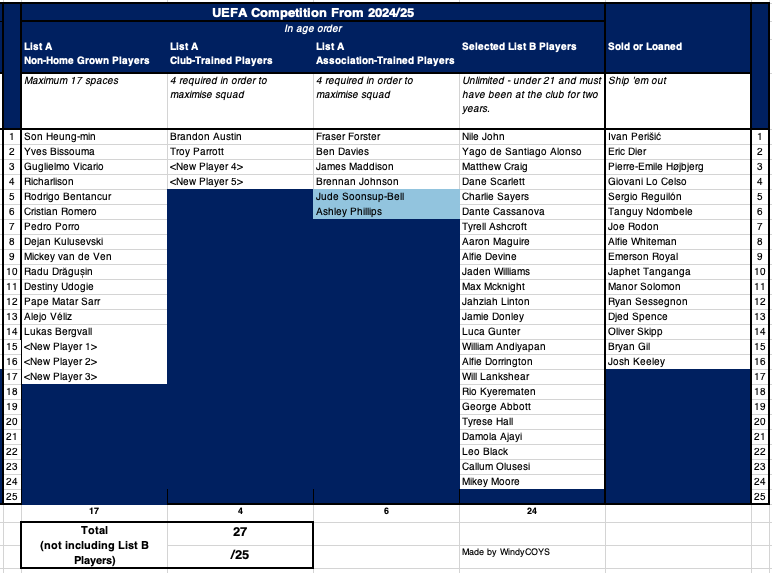

I have also included a projected Premier League squad list below.
